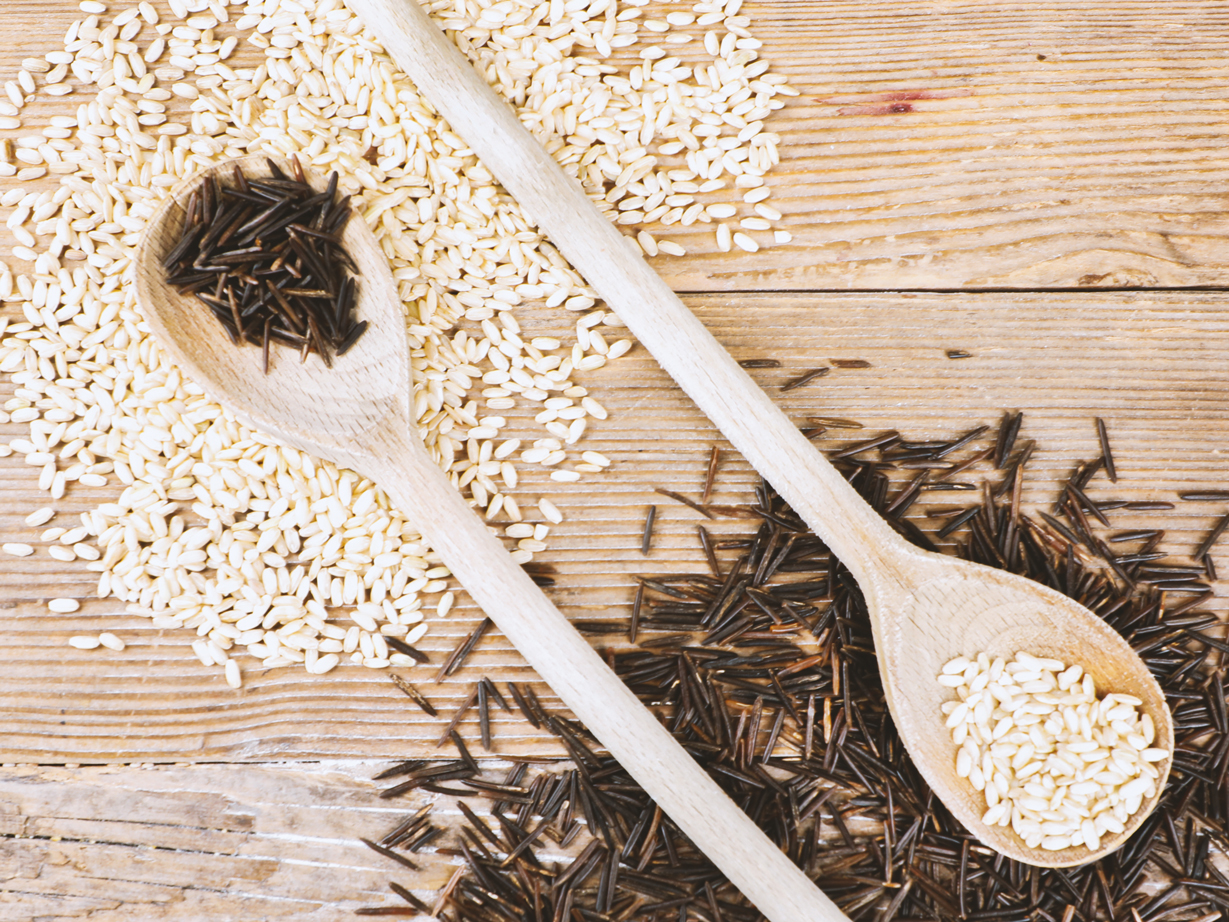Regional rice growing areas have existed in Ticino for the past 90 years. The company Terreni alla Maggia owns rice fields in the Maggia Delta and produces a local alternative to Asian rice. We will be looking at why rice cultivation in Ticino has become an unexpected success story.
At only 198 metres above sea level, the Ticino rice-growing area in the Maggia Delta is one of the lowest rice fields in the world. The popular local rice is grown very close to Locarno and Ascona. Rice-growing in this area has become an unexpected success story in many respects. Today’s popularity is even more impressive considering the first rice farmers failed miserably at the start. As was customary at the time, the fields were flooded during the entire growth period, which greatly contributed to its failure.
Successful Dry Cultivation
The Ticino soils are not suitable for wet cultivation. The cold water and sandy soils in the Maggia Valley act kind of like a sieve and enormously hinder growth. Today’s farmers use dry cultivation and only water the rice plants when necessary. This ensures that the rice farmers need much less water and that no methane is produced during cultivation. Methane is mainly released during conventional wet cultivation due to the lack of oxygen in the water. Therefore, Ticino’s rice fields are quite climate-friendly and leave a smaller ecological footprint than conventional rice fields.
First successful harvest and sale
It wasn’t until 1997 that the first commercially used harvest could be brought in. Since then, the current area under cultivation has been growing steadily and has now been expanded to 90 hectares. The current harvest yield amounts to 400 tons of rice and is constantly increasing. Renato Atrocchi, the Ticino agronomist, carried out some experiments and had to draw on his extensive knowledge before finding a suitable rice variety.
Renato Atrocchi is the long-standing director of Terreni alla Maggia (an agricultural estate on the Maggia river) and owner of the only rice cultivation company in Switzerland. After many trials, he found the optimal rice variety, conditions and factors which have had a decisive influence on the current growth success. Today his successor Moreno Maderni continues the cultivation and relies on the many years of experience of the successful Ticino rice producer.
Quality before quantity
Ticino rice is sold under the “Riso Nostrano Ticines” label and is one of the top products in Switzerland. The rice grain known as Loto has the typical elongated and convex shape, which corresponds to the rice type Lungo A. This variety is ideal for risotto, which is popular in Ticino, and binds the liquid during the cooking process, making it particularly firm to the bite.
This specific variety of rice proved to be best suited to the soils of the Maggia Delta and is now grown on 60% of the cultivated area. The demand for domestic rice is now so high that producers can hardly keep up.
Local sowing begins no earlier than the end of April and flowers from July onwards: after 150 days, the rice is ready for harvest. The product is therefore ready for sale and consumption as of October and November.

IP quality
The Terreni alla Maggia team also works according to the guidelines of integrated production IP. This requires the lowest possible application of herbicides. However, dry cultivation produces more weeds than the usual wet cultivation. In IP production, for example, weeding is often done by hand. In addition, rice can be cultivated on the same field for two years and Terreni alla Magia relies on the proven crop rotation of maize, durum wheat, beer barley, potatoes and Chinese cabbage.
Fortunately there are fewer animal pests in the rice fields. Deer are the only animal enemies of the rice plant, though the fields are not near the forest and the damage is hardly noticeable. Occasionally, fungicide treatment is necessary, which is only used to a limited extent. This is what gives Ticino rice its particularly high quality and is particularly appreciated by the local population.
Internal processing
In addition, the Swiss company focuses on the integrated value chain. As a result, all processing is done in-house and as little as possible is processed externally. This ranges from growing and harvesting to peeling in the company’s own plant. The only thing that is not done by Terreni alla Maggia is grinding and refining the rice. Grinding produces about 20% broken rice which the producers then use to produce regional rice beer, rice brandy and feed meal.
In conclusion, the Ticino rice producers are extremely innovative and are riding a well-deserved wave of success. The product range is still being constantly expanded as rice pasta and other products are becoming increasingly popular. Although we don’t know what projects Terreni alla Maggia will be focusing on in the future, one thing is clear: the company’s success story is far from over.











What do you think?